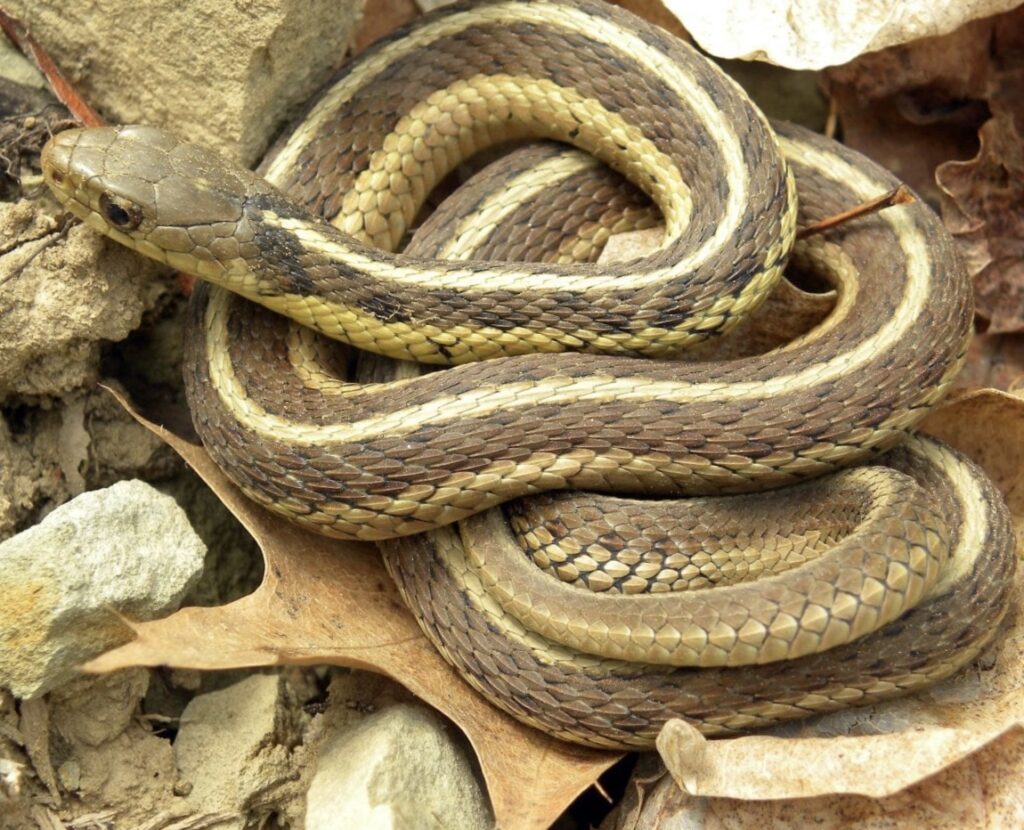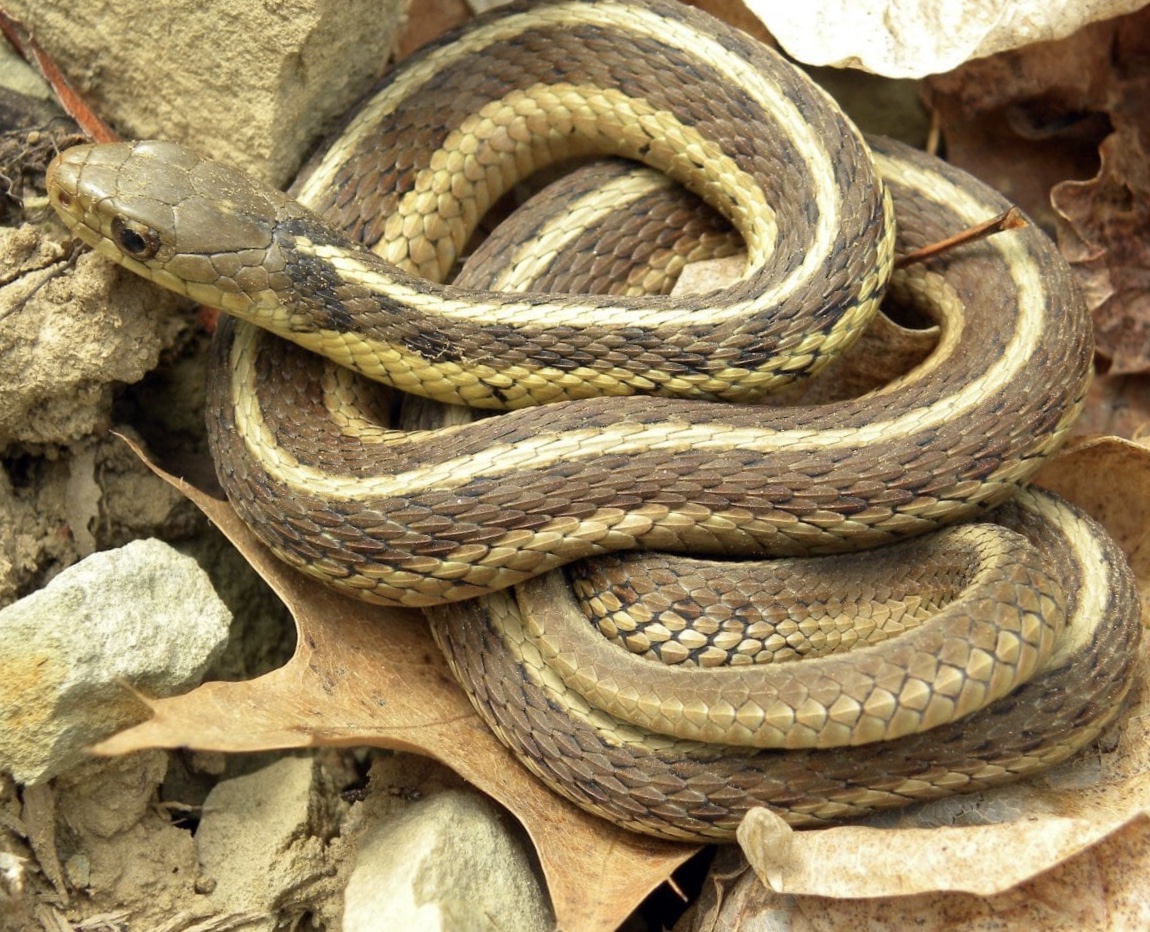ANIMAL: Chicago Garter Snake Thamnophis semifasciatus Type of Animal: Colubrid Habitat: Forests, edge habitats, fields, wetlands/wetland margins, streams/stream edges, meadows, marshes, ponds/pond edges, prairies, suburban/urban areas (even in Chicago city proper-especially w/ plenty of cover), vacant lots, woodlands, hillsides, riparian areas, grassland, savanna, edges of lakes, edges of ditches, agricultural areas, swamps Location(s): NE Illinois & extreme SE Wisconsin Appearance: Dark brown/black w/ yellow or gray mid-back stripe, yellow stripes on sides, gray-green belly w/ dark spots on edges of most belly scales, some animals have red between side scales Food/Diet: Insects, eggs, small birds, young birds, fish, amphibians, small mammals, worms, snails, slugs, leeches, lizards, crayfish Status in Wild: Stable Conservation: Breeding in zoos, wildlife centers, & herpetoculture Lifestyle: Solitary or groups of 10-40 snakes. Highly gregarious during hibernation. Additional Info: Called: Male Female Young: Snakelet Group: Knot/Bed Weight: Male: 5 oz Female: 5.3 oz Gestation: 2-3 months Life Span: 3-10 years Body Length: Male: 1.8 ft Female: 3.2 ft Young: 9 in Tail Length: Male: 7.2 in Female: 10.8 in Main predators are large fish, turtles, bullfrogs, birds, larger snakes, & carnivorous/omnivorous mammals. These snakes ovoviviparous, in which eggs hatch inside mom’s body & born live. Females give birth to 15-80 live young. Has excellent sense of smell/sight. Usually breed in early spring. Sexually mature at 1.5 years old. Rely on stealth/camouflage for protection. Beneficial to people since they keep invertebrate & rodent populations down. They’re great swimmers. Breed in mating balls, which can have 10 males per single female. They’re diurnal, & sometimes crepuscular (active at dawn & dusk). Sometimes hunts at night in summer & during amphibian breeding periods. Fun Fact(s): More cold tolerant than most other Illinois snakes-sometimes emerging from hibernation to bask on warmer winter days. Long thought nonvenomous but actually produce very mild neurotoxic venom, which is chewed into wounds since they have enlarged teeth in back of mouth. Bites primarily harmless but may cause minor swelling/itching. Toxins in saliva used on prey. More likely to discharge musk/urinate rather than bite if cornered. Sometimes kept as pets. Named because stripes resemble old-fashioned men’s garters used to hold up socks.

